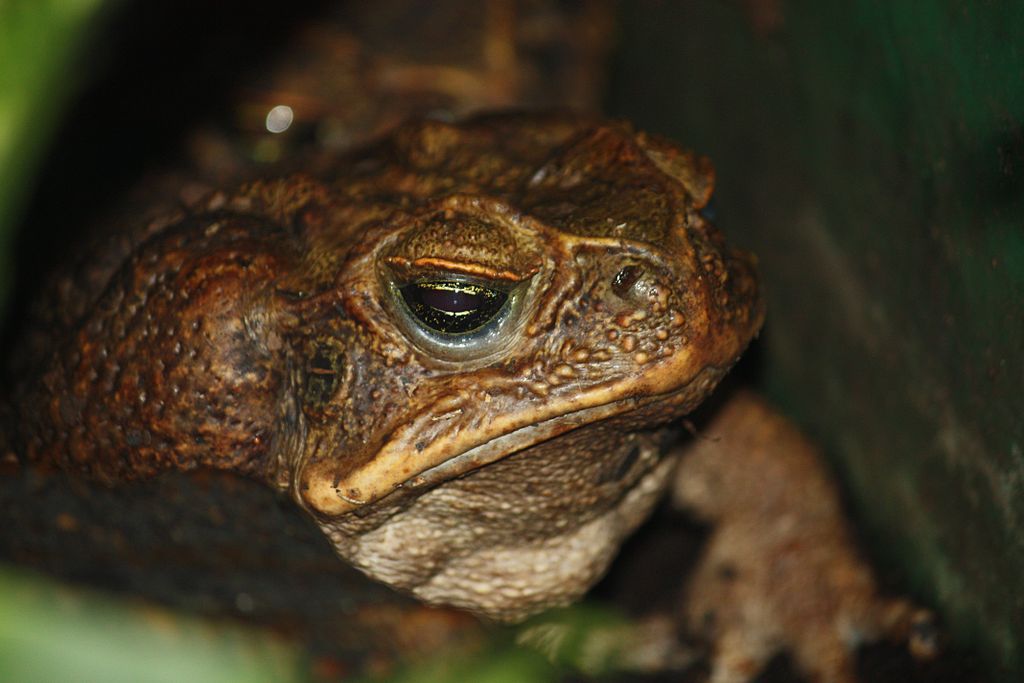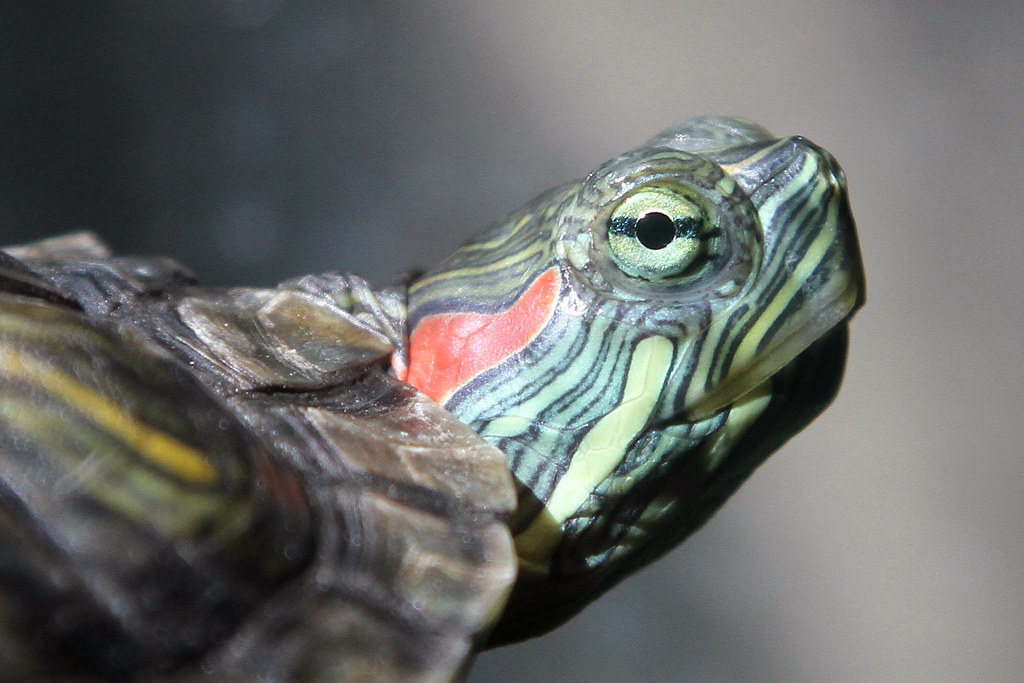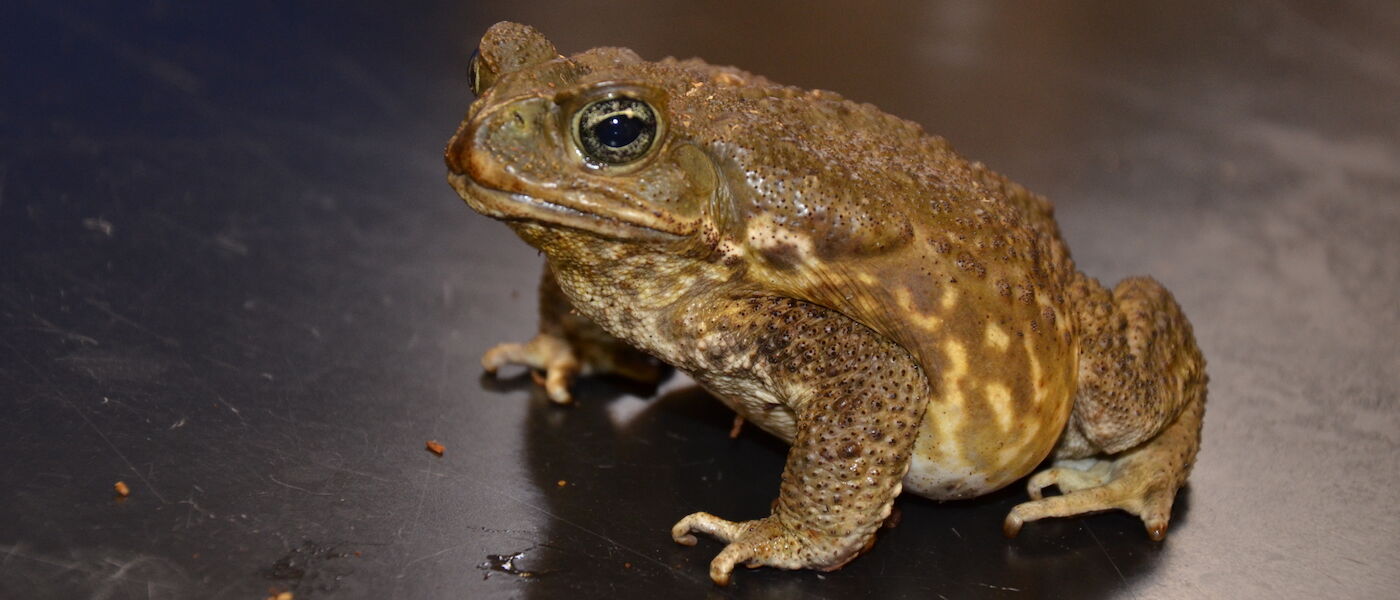Invasive cane toads have taken over a Florida suburb
Among the 100+ fascinating animal species that you can see at Liberty Science Center, one of them is the cane toad.
And recently, the cane toads were in the news – but not for a good reason!
According to CBS News, the invasive cane toads have taken over the suburb of Palm Beach Gardens, Florida. They can be seen hopping along roads in extraordinary numbers, blocking pool drains, and covering people’s driveways.
An expert featured in the news report said that recent rains coupled with warm temperatures is what sent the cane toads into a breeding cycle. They’re likely to continue spreading throughout South Florida in the coming weeks.

Cane toads have a reputation as an invasive species. In 1935, the amphibians were brought to Australia in an attempt to control the destructive beetle population. The toads failed to do that – instead, they wreaked havoc upon the Australian ecosystem, and the toad population now numbers over 200 million. The toads produce and secrete bufotoxins that are lethal for many animals, resulting in massive depletion of native species and the poisoning of humans and their pets.
Invasive species are one of the top drivers of global biodiversity loss, and, as is the case with the cane toad, humans are often responsible for their introduction to new ecosystems. In New Jersey, non-native animals released into the wild through the pet trade pose a big risk to our native fauna. For example, the commonly kept red-eared slider turtle (Trachemys scripta elegans) out-competes our native turtle species when released into the wild, making them effective invaders.

Interested in learning more about the role that animals play in their ecosystem? Stop by LSC’s Eat and Be Eaten exhibition, home to many incredible animal species including the naked mole rats, cotton-top tamarin monkeys, and leaf-cutter ants.
